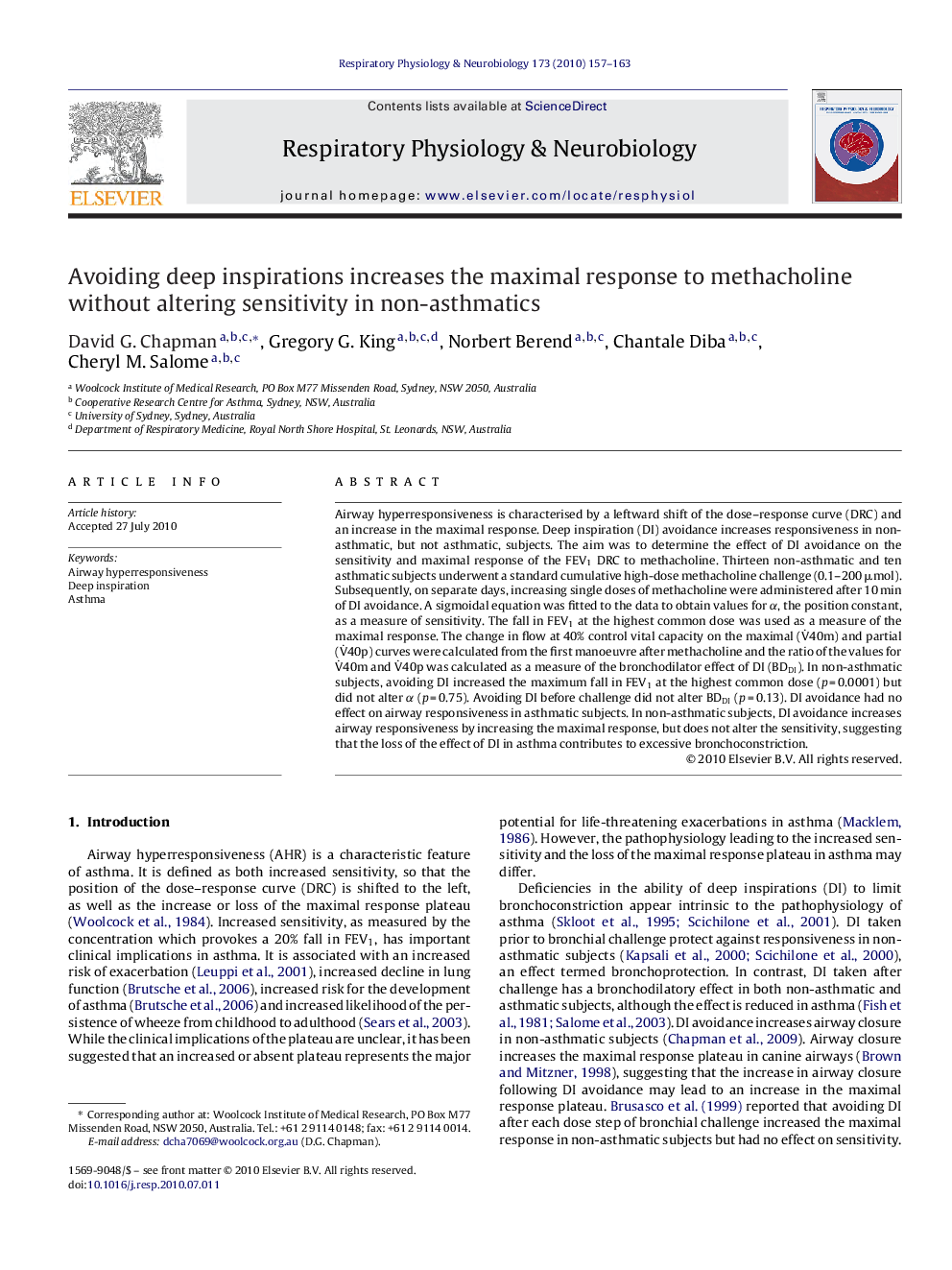| Article ID | Journal | Published Year | Pages | File Type |
|---|---|---|---|---|
| 2847565 | Respiratory Physiology & Neurobiology | 2010 | 7 Pages |
Airway hyperresponsiveness is characterised by a leftward shift of the dose–response curve (DRC) and an increase in the maximal response. Deep inspiration (DI) avoidance increases responsiveness in non-asthmatic, but not asthmatic, subjects. The aim was to determine the effect of DI avoidance on the sensitivity and maximal response of the FEV1 DRC to methacholine. Thirteen non-asthmatic and ten asthmatic subjects underwent a standard cumulative high-dose methacholine challenge (0.1–200 μmol). Subsequently, on separate days, increasing single doses of methacholine were administered after 10 min of DI avoidance. A sigmoidal equation was fitted to the data to obtain values for α, the position constant, as a measure of sensitivity. The fall in FEV1 at the highest common dose was used as a measure of the maximal response. The change in flow at 40% control vital capacity on the maximal (V˙40m) and partial (V˙40p) curves were calculated from the first manoeuvre after methacholine and the ratio of the values for V˙40m and V˙40p was calculated as a measure of the bronchodilator effect of DI (BDDI). In non-asthmatic subjects, avoiding DI increased the maximum fall in FEV1 at the highest common dose (p = 0.0001) but did not alter α (p = 0.75). Avoiding DI before challenge did not alter BDDI (p = 0.13). DI avoidance had no effect on airway responsiveness in asthmatic subjects. In non-asthmatic subjects, DI avoidance increases airway responsiveness by increasing the maximal response, but does not alter the sensitivity, suggesting that the loss of the effect of DI in asthma contributes to excessive bronchoconstriction.
